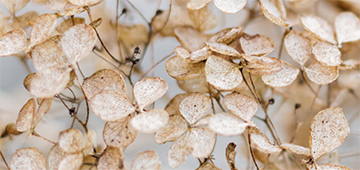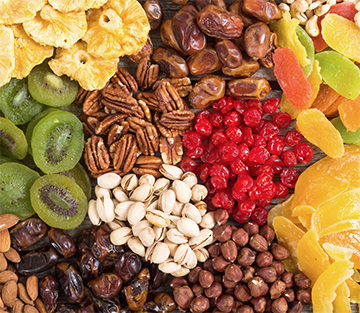
Preserving Flowers
 One of the best parts of summer is watching the seasonal flowers bloom. However, sometimes they come and go faster than we’d like. To enjoy your favorite flowers year-round, try preserving them at home! Many can be dried to make tea flavors. There are two common ways to dry flowers easily at home: air drying and pressing.
One of the best parts of summer is watching the seasonal flowers bloom. However, sometimes they come and go faster than we’d like. To enjoy your favorite flowers year-round, try preserving them at home! Many can be dried to make tea flavors. There are two common ways to dry flowers easily at home: air drying and pressing.
Air Drying
Air drying is one of the simplest methods to preserve flowers. Before the flowers begin to wilt, pull them out of the vase, or pick them from outside, and allow the stems to dry, for about 3-4 hours, or pat them dry with a towel. Then, secure them with a string or wire, and hang them upside down in a location with air circulation. Allow them to dry, unbothered, for at least a week. It is best to keep them out of direct sunlight to preserve the color.
Pressing
Pressing flowers works best for smaller, and limited petal flowers with just a few petals, such as pansies, geraniums and daisies. Cut the flower(s) to the desired length and remove the leaves if desired. This method works great using a book, but other flat objects that can compress the flowers will also work. If using a book, line both pages with wax paper. Lay the flowers on the wax paper and close the book, the flowers should be sandwiched with wax paper. Lay a heavy object on the closed book for better results. Leave flowers to dry for at least one week. Dried flowers can be used for many styles of decor. They can be framed, cured in resin, or even put in a vase. Preserving flowers can also be a great keepsake to remember important and special events.
Learn more about edible flowers from the University of Minnesota Extension and Iowa State University Extension and Outreach.
Try Preserving Food for Hiking and Camping Season
 During the summer months, many people venture into the great outdoors to explore nature while getting exercise. Checking out nearby parks and trails provides quality time whether you are alone or with others.
During the summer months, many people venture into the great outdoors to explore nature while getting exercise. Checking out nearby parks and trails provides quality time whether you are alone or with others.
The fresh air and exercise might whet your appetite; however, you probably do not want to carry a heavy cooler and ice along with you. When packing food for a hiking trip, choose items that are lightweight, fit in a backpack, nutritious and do not require refrigeration. Peanut butter and jelly sandwiches, nuts and seeds, fresh whole fruit, dried fruit (such as banana and apple chips), and crackers are excellent choices. Be sure to bring a bottle of water to stay hydrated.
You can put your food preservation skills to work when you prepare for hiking trips.
 Consider making jerky, fruit leather and dried fruits at home. The North Central Food Safety Extension Network has many Extension food preservation resources from the 12-state region.
Consider making jerky, fruit leather and dried fruits at home. The North Central Food Safety Extension Network has many Extension food preservation resources from the 12-state region.- For example, Kansas State Extension has a page with dehydration information and links, and North Dakota State Extension provides online printable handouts about making fruit leather, dehydrating fruit, jerky and more. University of Minnesota Extension has information about drying strawberries, jerky and other foods.